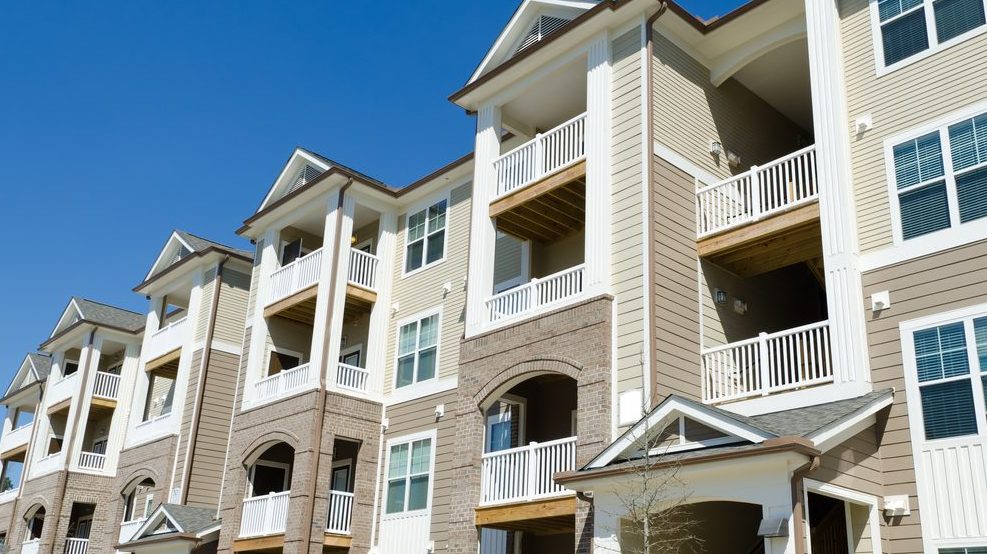Where Are Affordable Housing Units at Greatest Risk of Expiring?

Across the nation, there is large shortfall of Low Income Housing Tax Credit, or LIHTC, units. Shortages of designated affordable housing are even more severe in certain metro areas. Another component to the scarcity issue is the expiration of the tax break associated with the LIHTC. Again, certain metros are more vulnerable than others to expiring LIHTC units.
In order to receive the LIHTC tax break, a property must adhere to a rent level affordable relative to a metro area’s median income, specified by the U.S. Department of Housing and Urban Development. The tax credit used to finance or rehab the property expires after 15 years, at which time the tax credit can be extended. However, if the credit is not extended, asking rents could rise to the market level. (In some cases, these units can already be supported by multiple subsidies and still be deemed affordable). The issue of expiration takes time to address. For example, units expiring in 2017 were issued around 2002, so there is a significant time lag between newly financed units and pulling enough reliable data to help answer the expiration question.
The expiration question is important to address the issue of preservation of affordable inventory available to low-income households. Using data from the National Housing Preservation Database, MPF Research estimates which metros have a greater risk of units expiring over time. We do this by clustering those years of expiration over the near term (in 2016 and from 2017 to 2020) versus those that are more secure in the long-run scenario (in 2021 or later).
In 2016, Washington, DC Led for Expiring Units
Among the major markets in the MPF Research top 100 markets, Washington, DC had the highest percentage of LIHTC units set to expire in the short term. At the end of 2016, an estimated 11.5% of LIHTC units expired. By comparison, across the larger set of top 100 metros, we estimate 5.4% of LIHTC units expired at the end of 2016.
In Washington, DC, more LIHTC units are set to expire in 2017 to 2020. Over that time, if credits are not renewed or subsidized in some other way, Washington, DC will lose another 25.1% of LIHTC-supported affordable housing stock. And from 2021 to 2025, a total of 26.3% LIHTC units are scheduled to expire. Overall, LIHTC units account for an estimated 10.2% of units in the broader apartment stock in Washington, DC.
From 2017 to 2020, Expirations Are Highest in Three Markets
In the 2017 to 2020 time range, San Antonio, Hartford and Phoenix are three metros with the largest volume of LIHTC units at risk. At least 40% of LIHTC units are expected to expire over the next four years within these three metros, at 50.9%, 42.1%, and 41.3%, respectively. Further, we previously identified Phoenix as having the nation’s greatest shortfall of LIHTC units relative to the estimated need. From 2017 to 2020, we estimate 28.1% of LIHTC units will expire across the top 100 markets.
Expiration Schedules in Different Metros
Have a look at estimated expiration schedules for individual metros within the MPF Research top 100 markets below:
In answering the question around preservation of designated affordable housing stock, HUD authored a survey in 2009 that highlights the outcomes of properties financed through LIHTC upon expiration of the tax credit. Generally, the outcome after year 15 is largely dependent on the local housing market as to whether LIHTC units continue to maintain their low-income status. After year 15, HUD identified three primary outcomes listed below:
• Remain affordable without recapitalization
For the most part, the majority of properties surveyed in this study were operating as affordable housing and were still owned by the original developer. Even with expiring use restrictions, property owners remained committed to positioning the property as affordable. This outcome was also present in weaker rental markets where owners and operators command lower rents, as the owner may not be compelled to lift rent levels.
• Remain affordable with new sources of subsidy
Some properties were recapitalized with a new infusion of tax credits. Further, limited partners will generally refinance the mortgage. These financing efforts are in part to renovate the property. In this case, HUD reported a rise in the use of the 4% LIHTC subsidy over the 9% LIHTC subsidy for renovations.
• Property is repositioned as conventional, market rate
This was the least common outcome overall. Generally, properties were repositioned as market rate when the use restrictions (those rent constraints to which the property must adhere) are lifted. As documented by HUD, repositioning tends to happen in weaker housing markets where the property is failing financially. Those properties with defaulted mortgages are likely to be repositioned as market rate by the lender.
There are cases of value-add opportunities in healthier markets where LIHTC properties can be repositioned to the conventional market. These judgements are solely based on market fundamentals and outlook, available capital, potential tax benefit and overall strategy. In markets with LIHTC properties, individual state housing finance authorities need more data and insight into the individual properties that are at greatest risk of being repositioned to the conventional market. Nonetheless, the LIHTC program has been a successful incentive to build and preserve much-needed affordable housing. Preserving LIHTC units as affordable is a priority in continuing to address the large shortfall of affordable housing in the U.S.






